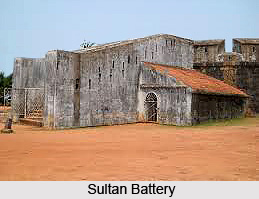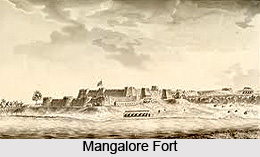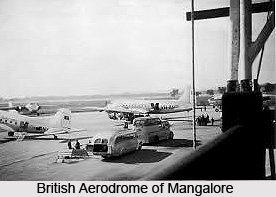 History of Mangalore deals with the mythological stories of Indian epics, ancient kingdoms of South India, medieval kingdoms of the Muslim Dynasty and the rulers of European colonial eras.
History of Mangalore deals with the mythological stories of Indian epics, ancient kingdoms of South India, medieval kingdoms of the Muslim Dynasty and the rulers of European colonial eras.
Mangalore is locally known as Mangaluru. The name "Mangalore" has been mentioned in many ancient works of Hindu mythological and political history. The name of this town Mangalore appeared first in maps as early as the 1652 Sanson Map of India.
Early History of Mangalore
Early history of Mangalore deals with the early Indian mythology. In the Indian epic, Ramayana, Lord Rama ruled over the region, which is now called as Mangalore or Mangaluru. While on the contrary, in another Indian epic of Mahabharata, Sahadeva, the youngest of the Pandavas, governed the area. Arjuna, the hero of Mahabharata, also visited the area when he travelled from Gokarna to Adoor, a village near Kasargod district. The region of historical importance, Mangalore is highlighted by the many references to the city by foreign travellers. Cosmas Indicopleustes, a Greek monk, referred to the port of Mangalore as Mangarouth. Pliny the Elder, a Roman historian, made references to a place called Nitrias. The Greek historian Ptolemy referred Mangalore as Nitra in the early times. The views of Ptolemy and Pliny the Elder were probably made to the Netravati River, the major lifeline of Karnataka which flows through Mangalore. Ptolemy is also referred to the city as Maganoor in some of his works. In the third century BC, Mangalore was governed by Maurya Empire. At that time Mangalore was known as Sathia (Shantika). From second century BC to sixth century BC, the Kadamba dynasty ruled over the region.
 Medieval History of Mangalore
Medieval History of Mangalore
Medieval History of Mangalore begins with the glorious regime of Kadambi Dynasty to the Chalukya Dynasty. Later from 567 to 1325 AD, the town was ruled by the native Alupa rulers. The Alupa rulers ruled over the region as feudatories of major regional dynasties like the Chalukya Dynasty of Badami, Rashtrakuta Dynasty, Chalukya Dynasty of Kalyani, and Hoysala Dynasty of Karnataka.
Mangalapura or Mangalore was the capital of the Alupa dynasty until the 14th century. The city of Mangalore became an important trading zone for Persian merchants. The city, Mangalore was visited by Adenese merchant Abraham Ben Yiju. The Moroccan traveller Ibn Battuta, who had visited the town in 1342, referred to it as Manjarun, and stated that the town was situated on a large estuary. By 1345, the Vijayanagara rulers brought the region under their control. Later, the Jain Kings ruled the town as feudatories of the Vijayanagar Empire, and brought the town firmly under an efficient and centralised administration. In the year 1448, Abdul Razak, the Persian ambassador of Sultan Shah Rukh of Samarkand, visited Mangalore, and was amazed at a glorious temple he saw in the city, en route to Vijayanagara. From the time of Vijaynagara rule, Mangalore became the hotspot for the religious people. Later after the downfall of Mughal Empire in India, the regional power came into existence and began to rule Mangalore. European influence in Mangalore can be traced back to 1498, when the Portuguese explorer Vasco da Gama landed at St Mary`s Island near Mangalore. Later the rule of Haider Ali and his son Tipu Sultan named Mangalore as the City of revolt against British East India Company.
Modern History of Mangalore
After the downfall of Mughal Empire and the regional empires like, the empire of Haider Ali and Tipu Sultan came into existence and the French East India Company gained prominence rather than British East India Company.
 After tumultuous battle with Haider Ali and Tipu Sultan, British East India Company came to power of Mangalore or Mangaluru. The city was largely peaceful during British rule, with urban and infrastructural developments affected during the period. Mangalore flourished in education and in industry, becoming a commercial centre for trade. The opening of the Lutheran German Basel Mission in 1834 brought many cotton weaving and tile manufacturers to the city.
After tumultuous battle with Haider Ali and Tipu Sultan, British East India Company came to power of Mangalore or Mangaluru. The city was largely peaceful during British rule, with urban and infrastructural developments affected during the period. Mangalore flourished in education and in industry, becoming a commercial centre for trade. The opening of the Lutheran German Basel Mission in 1834 brought many cotton weaving and tile manufacturers to the city.
After the independence of India, by the States Reorganisation Act (1956), Mangalore, which was the part of the Madras Presidency, was included into the authority of the newly created Mysore, which was the Princely State of Mysore during the rule of British East India Company. Mangalore is a major city of Karnataka, providing the state with access to the coastline of Arabian Sea.



















